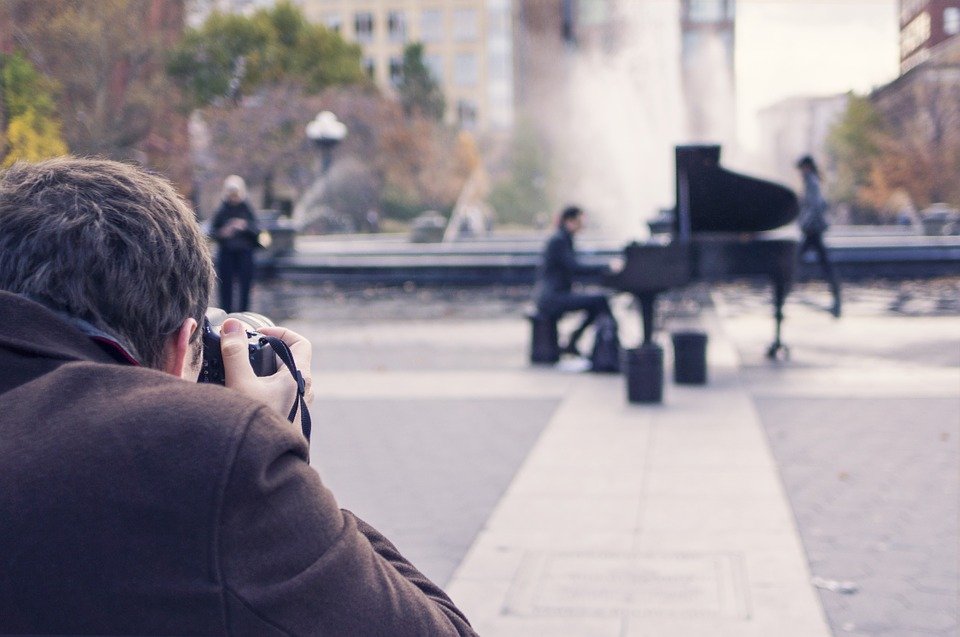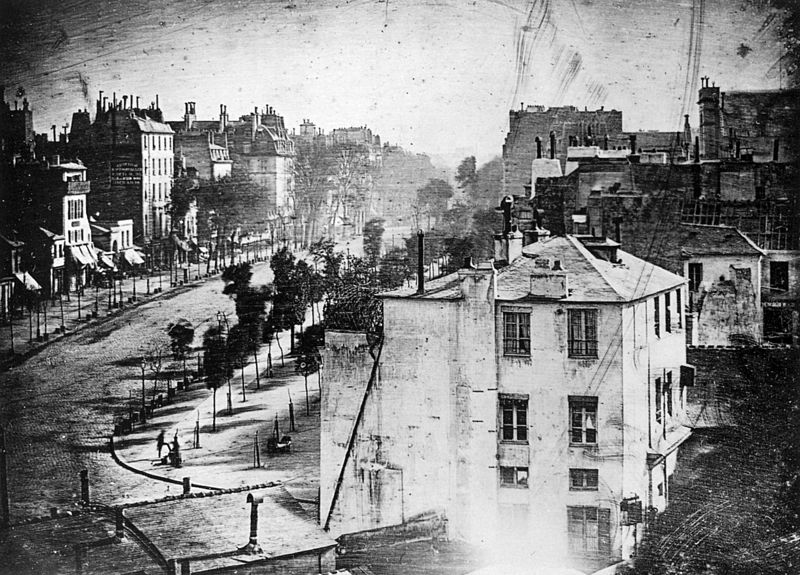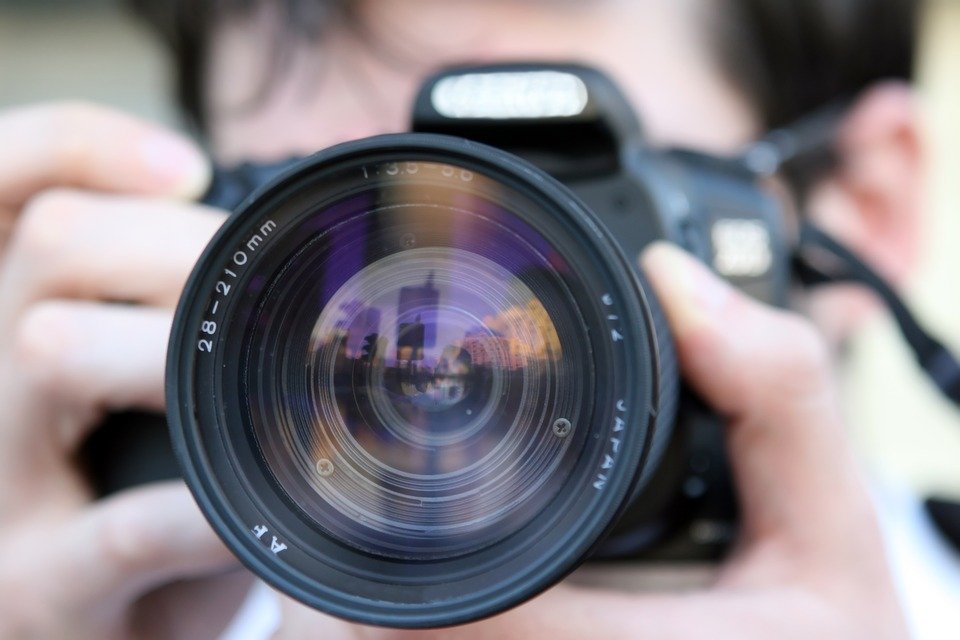Street photography is all about being natural – which means you can capture whatever you think is appealing. If you are looking for a detailed guide on street photography that can help get you started in this genre of photography, then you are in the right place. So, without any further ado, let’s get started.
What is Street Photography?
Street photography is a broad term that cannot be defined in a simple definition. However, Wikipedia says that street photography is a type of photography that is conducted for art or enquiry and features unmediated chance encounters and random incidents. In simple words, street photography is about capturing candid life in public areas, like streets, bus terminals, parks, museums, etc.
And, contrary to its name, street photography can be done anywhere, not just on the streets. Street photography is everything, be it fashion, documentary, and at the most basic, REAL. No other area of photography is as wide as street photography, which gives creative heads an excellent opportunity to show their creativity through their photographs.
A Brief History of Street Photography
Look at the very first photograph, which was shot and developed by Louis Daguerre in 1839 – you will see a Parisian street scene from an elevated window, but look close enough, and you will see that there is a small, blurred figure of a person on the boulevard probably having his shoes polished. Therefore, street photography is as old as photography itself.
In the early twentieth century, a photographer named Paul Martin documented unwitting subjects on the streets of London as they went about their day. This shows how people of that era were also keen about capturing candid life of the streets.
Later, one of the popular fathers of photojournalism, Henri Cartier-Bresson, introduced the term “decisive moment”, which is what defined successful street photography. This term means a completely candid moment that exists for a perfect, brief second of time. Every element, including action, setting, and light comes together in harmony during this very “decisive moment” to create one amazing photograph.
Legalities of Street Photography
From hiding cameras to capturing photos of unsuspecting strangers, one of the biggest challenges that a street photographer has to face is the legality of this whole thing. Plus, the awkwardness that one might have to face if someone catches them photographing them. Every country has its own set of laws and rules when it comes to privacy in public and private places.
For instance, in the USA, people do not have a right to privacy in public places, which means they can be legally photographed without any problem. Public places mean parks, boulevards, shopping malls, bus stations, roads, etc. However, if you are traveling to a foreign country and love doing street photography, make sure to see what the local customs and laws are there.
Most of the times, it is very easy to do photography in bustling areas, and this is the reason why beginner street photographers may want to start in densely-populated big cities, such as London, New York, Paris, or Tokyo.
If you are photographing people for creative or personal use, you don’t need to get release forms signed. However, if you are photographing with human subjects in public places for commercial purposes, then the people are considered models, and signing release forms becomes essential. When possible, don’t hesitate to ask permission.
There might be instances when people come to you and ask if you were photographing them, you should be honest and explain the purpose and usage of the photograph. If they ask you to delete their photo on your camera, you should do so without arguing with them.
What Makes a Good Street Photograph?
These days, social media platforms, especially Instagram, is flooded with subpar and mediocre street photography. By just pointing your camera in the direction of some buildings, animals, or humans on the street doesn’t qualify as street photography.
A good street photograph needs to have a clearly defined subject. All the rules of photography, including the rule of thirds, composition, leading lines, use of negative space, frames, symmetry, etc. are still there in street photography as well. The best way to create an amazing photograph is by telling a story through your images.
Do Street Photos Need People?
This is the most asked question when it comes to street photography, making it one of the most debatable questions. According to sticklers, street photography must contain people, as they are the real essence of street photography. However, it isn’t compulsory because many top street photographers also capture pictures of landscapes, sidewalks, and shadows.
You can also capture the photographs of things left behind by people. Such images leave the viewers wondering what the actual story would be behind these discarded objects.
Unlike other types of photography, street photography requires less equipment. Basically, In terms of street photography, less is more. You have to become invisible when you are doing street photography; otherwise, you won’t be able to capture those amazing “decisive moments”. Using a small camera would be an excellent option. However, this doesn’t mean that you cannot do street photography with your DSLR.
Equipment that you can bring for street photography includes a small sling bag, extra batteries (because you never know when you run out of one), your smartphone, and your favorite lens. Don’t overload yourself with extra lenses and flashes that you won’t be needing.
The Best Lens for Street Photography
Again, this is a debatable topic because everyone has their own style when it comes to doing street photography. If you want to get into people’s faces, then you might want to use a prime lens, such as 23mm, 28mm, 35mm, or 50mm. Otherwise, the telephoto lens is there if you want to keep yourself a little more hidden.
In other words, lenses define your relationship with the subject. If you are learning street photography, then it is recommended to stuck with one lens using the same focal length because this way, you will know what your frame looks like even before raising your camera to the eye.
So, what to use? 35mm or 50mm Prime Lens or Both? If you are confused between choosing them, then don’t worry because you can use either one as both are prime lenses. Zooming isn’t possible with both of them, but getting a great depth of field is.
Both 35mm and 50mm offer different results. The 35mm lens will capture more of the scene while the 50mm prime lens doesn’t have any distortion, unlike the former option.
Camera Settings for Street Photography
There are no fixed settings or ‘standard’ settings for street photography. Every street photographer shoots in completely different ways according to their liking. Although there are no correct ways, there are some factors to consider. If you want a lot of bokeh in your street photography, then it might get hard to capture fast-moving genre of candid photography. If you are using a prime lens and photographing at f/2.8 and you don’t focus right, you will probably ruin the shot.
If you decide to blur everything in the background, then you will also end up removing context from the image, which might take away some of the storytelling or meaning.
Some Tips for Street Photography
- Try Juxtaposition
Juxtaposition might sound like a fancy word, but it has a simple meaning. Juxtaposition is when you put two different elements in a single frame that are directly contradicting each other. This way, you can create a strong image in street photography by simply juxtaposing different elements in your picture. For instance, you can take a picture of a skinny man standing next to an obese person, a child next to his/her grandmother/grandfather, or someone in a red shirt standing next to a person wearing a green shirt (called color juxtaposing).
To create a strong juxtaposition shot, you can stand in front of interesting background, let’s say a billboard of a person smiling or laughing, and wait for someone who looks sad to enter the frame. This will show two contradicting elements in a single frame.
- Shoot from a Distance
If you are not comfortable shooting your subjects on the streets up close, no problem – you can shoot from a bit farther away. You can shoot from a distance, but for this, you have to look for environmental scenes with interesting characters. For example, you can shoot street artists performing from across the street.
- Capture Street Musicians in Action (Buskers)
Buskers won’t mind if you take their pictures. However, they earn from busking so it would be good if you drop a couple of bucks into their hat before taking their photos. You can shoot from different angles and play with the light. As a gesture of goodwill, you can ask street performers for their card so you can send them their photos when you are done.
- Photograph the Backs of People
Who said that you could only photograph people’s faces? You can photograph people from their backs if you think they are wearing something interesting, such as clothes, hats, or shoes, etc.
- Photograph Street Animals
Everyone loves dogs and cats! You can click pictures of street animals, which might also lead to a conversation with the pet’s owners. And yes, when photographing animals on the street, don’t forget to get down low to their perspective. A close-up shot with wide perspective will make your shot far more interesting.
- Photograph Silhouettes
Want to capture subjects anonymously? Capturing silhouettes is a great option! Look for a bright window or strong backlighting to act as a background and wait for the subject to pass in front of it. This will create a dark silhouette. Make sure not overlap silhouette element in your frame so you can shoot clearly defined subject.
Although capturing silhouettes requires a lot of patience, it can be a lot of fun.
- Learn the Right Way to Approach Strangers
If you are into photographing human subjects, then you might as well want to learn the right way to approach strangers. Don’t just rush towards them pointing your camera and saying “hey I want to click your photo” – instead, approach them nicely and let them know that you are a street photographer and want to click their portrait.
Once you establish a good rapport, ask them politely to photograph them, and they might let you do it. This way, you won’t just be photographing humans but also boosting your confidence.
- Go Where the Action is at
Most street photographers love clicking photos of human subjects as they find them more interesting than clicking landscapes. If you are also one of them, then you should go to crowded, downtown areas where you will find a lot of faces to capture.
- Shoot With Smaller Apertures
If you want to convey a storyline through your photography, then you want to shoot with smaller apertures because this way you will be able to capture both your subject and surrounding. You can show people in your photography and how they interact with the world around them.
- Smile and Say “Thanks” (If Someone Notices)
Street photography is about being humble and polite to others because you will be photographing them without their consent. And if someone notices you photographing them, the best way to diffuse the situation is by saying “thanks” and moving on.
Final Words
If you are new to street photography, you should not get too hung up on the definition and quality. Instead, your objective should be recording street life from your own unique perspective. You can experiment with different angles, areas, and focal lengths until you find the perfect shots that resonate with you.
You can be yourself and open when it comes to street photography. But most importantly, have fun!




